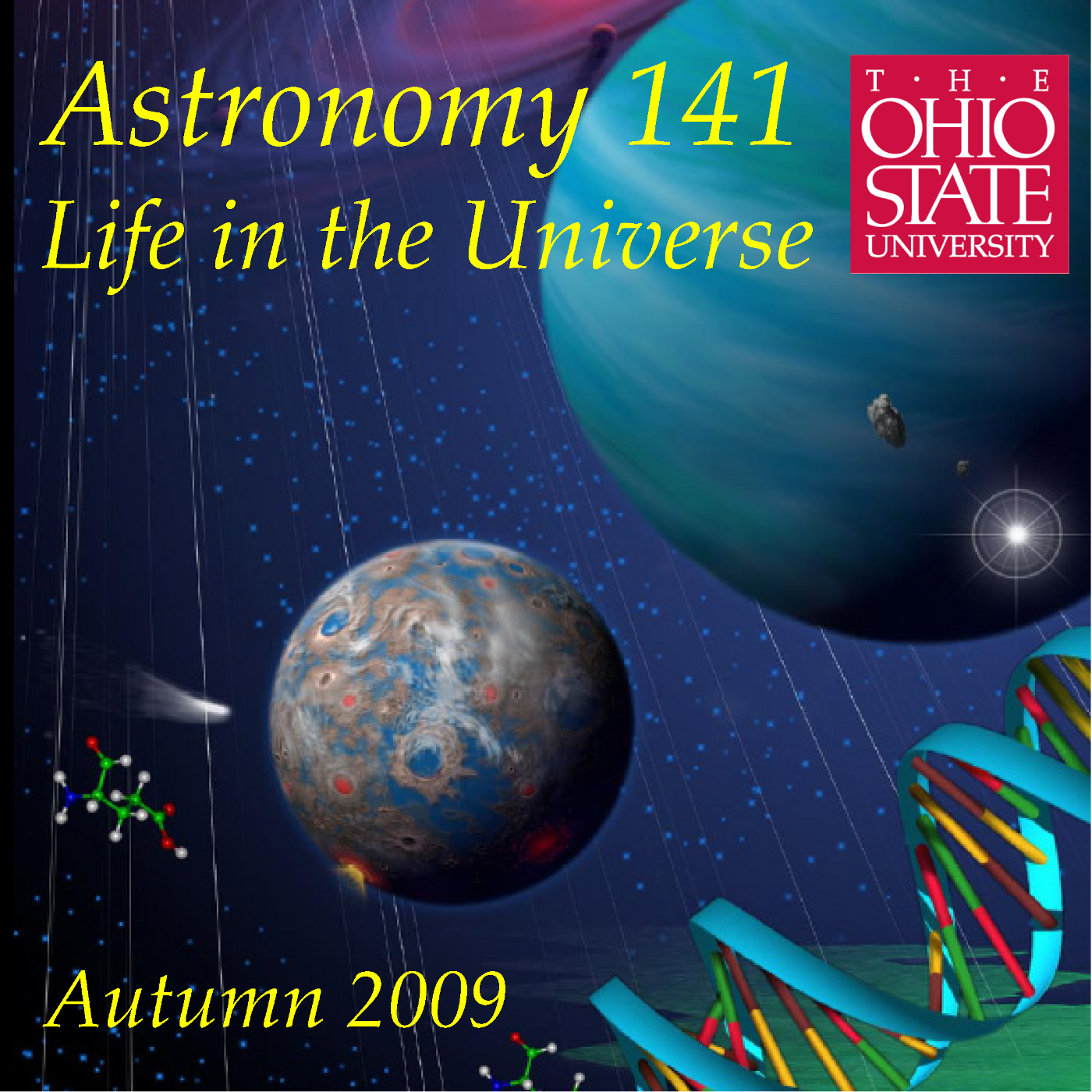Lecture 28: The Galilean Moons of Jupiter
Description
The four large Galilean Moons of Jupiter seem unlikely places to look
for life; at first glance they should be cold, dead, icy worlds.
Instead we find tremendous geological diversity, and two big surprises:
volcanically-active Io, and icy Europa. Io is the most volcanically
active world in the Solar System, heated by tides from Jupiter. Europa
is even more surprising: its icy surface is young, with few impact
craters and extensive signs of recent repaving by liquid water. Even
more surprising is the distinct possibility that underneath Europa's ice
is a deep liquid water ocean, heated by tides from Jupiter. We will
review the evidence for Europa's liquid sub-ice ocean and look at its
potential as an abode of life. If there is life to be found anywhere in
the Solar System beyond Earth, beneath the ice of Europa may be the best
place to look. Recorded live on 2009 Nov 3 in Room 1005 Smith
Laboratory on the Columbus campus of The Ohio State University.
More Episodes
Course finale and summary. We look back over where we've been the last
eleven weeks, and bring together all of the main themes of this course
on Life in the Universe. Recorded live on 2009 Dec 4 in Room 1005 Smith
Laboratory on the Columbus campus of The Ohio State University.
Published 12/04/09
Published 12/04/09
How will life, the Universe, and everything end? This lecture looks at
the evolution of our expanding Universe to project the prospects for
life into the distant cosmological future. Recent observations show
that we live in an infinite, accelerating universe. I will trace the
evolution of the...
Published 12/03/09


